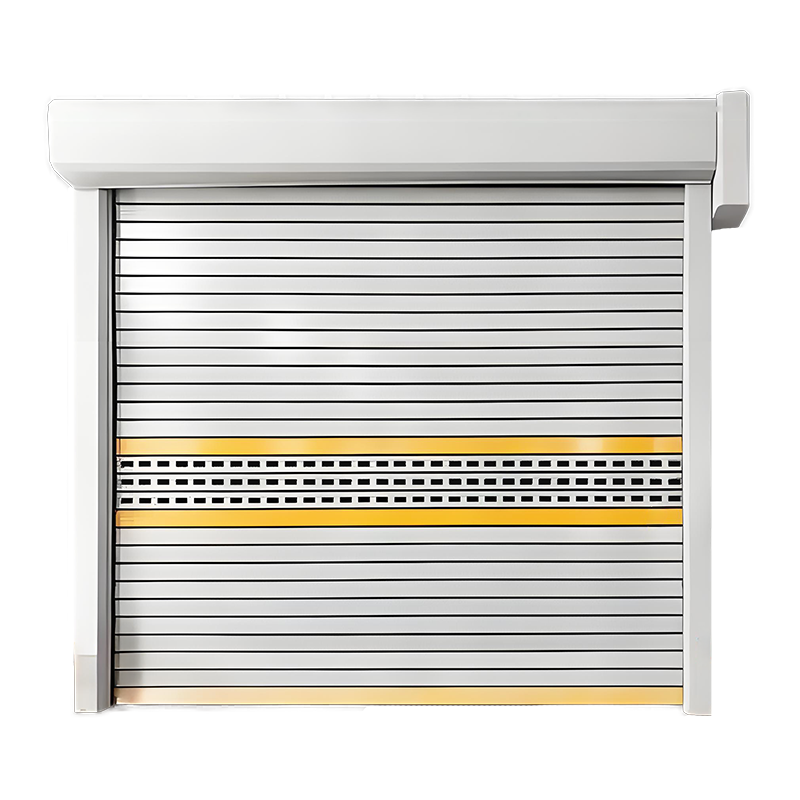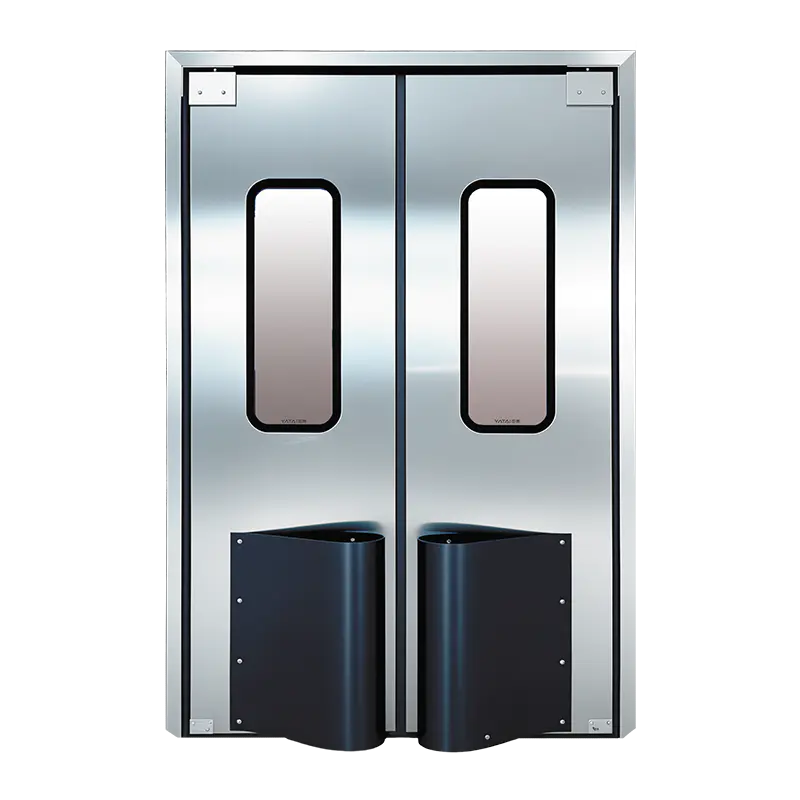What Are the Main Benefits of Installing High Speed Roll-up Doors?
In modern industrial and commercial environments, every second counts. The efficiency of a facility often depends on how well it manages movement—of people, vehicles, goods, and even air. One often overlooked but crucial element in this process is the door system. Traditional doors, while functional, can slow down operations, waste energy, and compromise environmental control. In contrast, High Speed Roll up Doors have emerged as a practical solution that addresses these concerns with remarkable precision.
From warehouses to cleanrooms, and from automotive plants to food processing facilities, High Speed Roll-up Doors are redefining what it means to operate efficiently. Below, we explore the key benefits of installing these doors and why they’ve become an indispensable asset in modern facility design.
1. Enhanced Operational Efficiency
Perhaps the most evident advantage of High Speed Roll-up Doors is their speed. Conventional sectional or sliding doors take several seconds to open and close. High Speed Roll-up Doors, however, can operate at speeds exceeding 1.5 to 2.5 meters per second, dramatically reducing waiting times for forklifts, workers, and transport vehicles.
Over the course of a workday, this time savings translates into significant gains in productivity. The rapid operation minimizes traffic bottlenecks, streamlines workflow, and supports continuous movement within high-traffic areas. In logistics centers, where trucks are loaded and unloaded continuously, these few seconds per cycle can lead to measurable improvements in throughput and operational performance.
2. Improved Energy Efficiency
One of the often-underestimated benefits of High Speed Roll-up Doors is their contribution to energy conservation. Traditional doors stay open longer, allowing conditioned air—whether heated or cooled—to escape. In contrast, the rapid open-and-close mechanism of High Speed Roll-up Doors minimizes air exchange between different temperature zones.
This becomes especially crucial in climate-controlled environments such as cold storage warehouses, food production lines, and clean manufacturing spaces. By maintaining temperature stability, facilities can lower their HVAC system loads and reduce energy consumption. Over time, this not only leads to cost savings but also contributes to environmental sustainability goals—a growing priority for modern industries.
3. Superior Environmental Control
High Speed Roll-up Doors also serve as an effective barrier between different environmental zones within a facility. Their tight sealing mechanisms help maintain air pressure, temperature, and humidity levels, which are critical in industries like pharmaceuticals, electronics, and food processing.
In cleanrooms, where contamination control is vital, the rapid closure of these doors reduces the risk of airborne particles entering controlled spaces. Likewise, in manufacturing facilities where fumes, dust, or odors must be contained, these doors help isolate processes effectively.
Their ability to prevent cross-contamination between work zones makes them ideal for applications that demand strict hygiene and environmental regulation.
4. Enhanced Safety and Accident Prevention
Modern High Speed Roll-up Doors are designed with advanced safety features that go far beyond the capabilities of traditional industrial doors. Photoelectric sensors, motion detectors, and soft-bottom edges detect obstructions instantly, stopping or reversing the door’s movement to prevent accidents.
In fast-moving environments—such as automotive plants or logistics centers—these safety systems play a vital role in protecting both personnel and equipment. Moreover, because the doors open so quickly, they reduce the likelihood of collisions caused by impatient drivers or machinery operators attempting to pass through before the door is fully open.
The inclusion of transparent vision panels also improves visibility, allowing operators on both sides to see approaching traffic. This visibility significantly enhances workplace safety and reduces downtime caused by damage or injury incidents.
5. Durability and Low Maintenance Requirements
High Speed Roll-up Doors are engineered for intensive, high-cycle operation. Built with durable materials such as reinforced PVC, aluminum, or composite fabrics, they are capable of thousands of open-close cycles per day without failure.
The rolling design reduces friction and wear on moving parts, while self-repairing models can automatically reset the door curtain into its guides if accidentally dislodged. This feature minimizes service interruptions and maintenance costs.
In addition, these doors are designed to operate smoothly even under demanding conditions such as high humidity, temperature extremes, or wind pressure, making them a reliable long-term investment.
6. Space Optimization
Unlike traditional hinged or sliding doors that require additional clearance, High Speed Roll-up Doors open vertically, rolling neatly into a compact overhead coil. This vertical design frees up valuable wall and floor space around the doorway—space that can be used for shelving, machinery, or workflow movement.
For facilities with limited space or narrow aisles, this is a major advantage. It also supports more efficient warehouse layouts and better overall utilization of available square footage.

7. Better Traffic Flow and Logistics Management
In busy warehouses or production environments, smooth traffic flow is essential. Slow or obstructive doors can create unnecessary delays, disrupt synchronization, and increase the risk of accidents. High Speed Roll-up Doors promote seamless traffic movement between sections of a facility, helping forklifts, personnel, and automated guided vehicles (AGVs) move efficiently without interruption.
By segmenting areas without slowing them down, these doors enable facilities to maintain both flow and separation—a combination that enhances organization and productivity. Some advanced systems even integrate with access control or automation systems, allowing doors to open automatically in response to sensors or vehicle tags, further streamlining logistics.
8. Noise and Dust Reduction
Noise pollution and airborne dust are two persistent challenges in industrial settings. High Speed Roll-up Doors help mitigate both. When closed, they create a tight seal that blocks out external noise, providing a quieter working environment for employees.
They also serve as effective barriers against dust, debris, and insects, which is particularly beneficial in food production, packaging, and clean assembly operations. This protective function contributes to improved product quality and compliance with hygiene standards.
9. Customization and Versatility
High Speed Roll-up Doors can be customized to meet the specific needs of different industries. Options include:
- Insulated curtains for temperature-sensitive operations
- Transparent or mesh panels for visibility and ventilation
- Corrosion-resistant materials for humid or chemical environments
- Explosion-proof configurations for hazardous zones
This adaptability makes them suitable for a wide array of sectors, including automotive, logistics, agriculture, pharmaceuticals, and food manufacturing. Their design versatility ensures that each installation can be fine-tuned for optimal performance under unique operational conditions.
10. Aesthetic and Professional Appeal
Beyond functionality, High Speed Roll-up Doors also contribute to the visual organization and professionalism of a facility. Their sleek, modern appearance enhances the overall aesthetic of industrial or commercial spaces.
Available in multiple colors and finishes, these doors can complement corporate branding or color-coded zoning systems. In customer-facing environments such as car showrooms or retail warehouses, this professional appearance reinforces a sense of quality and operational excellence.
11. Long-Term Cost Savings
While the initial investment in High Speed Roll-up Doors may be higher than that of traditional doors, the return on investment becomes evident over time. Faster cycle times improve productivity; energy savings reduce operational costs; and minimal maintenance requirements lower long-term expenses.
Additionally, the enhanced durability and reduced downtime contribute to overall financial efficiency. In many cases, businesses recover the installation cost through energy savings and productivity gains within just a few years of operation.
12. Compliance with Modern Safety and Efficiency Standards
Many industries are now governed by strict safety, energy, and environmental regulations. Installing High Speed Roll-up Doors helps companies align with compliance requirements related to hygiene, energy conservation, and workplace safety.
Their design often adheres to ISO, CE, or other international standards, ensuring compatibility with modern industrial specifications. For global operations, this makes High Speed Roll-up Doors a strategic investment that supports long-term regulatory alignment.
13. Support for Automation and Smart Facility Systems
As industries move toward automation and smart manufacturing, High Speed Roll-up Doors are increasingly integrated into intelligent control systems. These can include motion sensors, RFID readers, or programmable logic controllers (PLCs) that automate door operation based on workflow needs.
Integration with facility management systems allows real-time monitoring, access tracking, and predictive maintenance alerts—enhancing efficiency and reliability. This compatibility makes High Speed Roll-up Doors a key element of modern Industry 4.0 infrastructure.
Conclusion
The benefits of installing High Speed Roll-up Doors extend far beyond faster operation. They represent a comprehensive solution to common industrial challenges—improving efficiency, safety, energy management, and environmental control. Whether in a high-volume logistics center, a clean manufacturing facility, or a refrigerated warehouse, these doors deliver tangible advantages that elevate performance and reliability.
In an era where operational speed and sustainability are both crucial, High Speed Roll-up Doors stand as a clear example of how innovation can serve practical needs. They don’t just open and close; they optimize flow, preserve energy, and enhance safety, all while contributing to a cleaner, more organized workspace. For businesses seeking to modernize their facilities, these doors are not just an upgrade—they are a strategic investment in the future of efficiency.


 English
English Español
Español русский
русский عربى
عربى
















